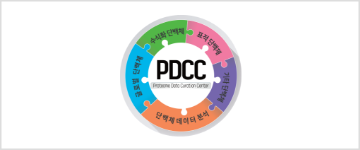2025 Fall
International Convention of PSK
2025 CONVENTION
Abstracts
PEGylated photosensitizer for enhanced anticancer efficacy and tumor specificity in photodynamic Therapy
- Heewon Yoon1, Yewon Keum1, Ji-Eun Chang*1
- 1College of Pharmacy, Dongduk Women’s University, Seoul 02748, Republic of Korea
Photodynamic therapy (PDT) shows significant potential for cancer treatment; however, its clinical application is hindered by the poor water solubility and limited tumor selectivity of many photosensitizers. To overcome these limitations, a PEGylated formulation of Photomed (Photomed-PEG) was developed to improve key pharmacological properties for effective PDT. In vivo fluorescence imaging and quantitative tumor fluorescence analysis were performed in tumor-bearing mice to evaluate biodistribution and tumor targeting. Anticancer efficacy was examined through tumor growth monitoring and histological analysis. Systemic toxicity and biocompatibility were evaluated by tracking body weight and examining major organs histologically. PEGylation significantly improved the solubility of Photomed, forming a clear solution, while the free form showed visible precipitation. In vivo imaging revealed that Photomed-PEG exhibited rapid systemic distribution, preferential tumor accumulation, and fast clearance from non-tumor tissues. Tumor uptake was markedly higher than that of free Photomed. Moreover, Photomed-PEG significantly suppressed tumor growth compared to the free form and induced tumor necrosis. No toxicity was observed in the major organs. These findings suggest that PEGylation is an effective strategy to enhance the solubility, tumor accumulation, and therapeutic efficacy of hydrophobic photosensitizers, thereby improving the overall performance of photodynamic cancer therapy.
Q&A
- There are no registered questions









































